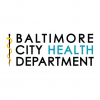Dr. Leana Wen: A citizen’s guide to good health (Daily Record)
Friday Feb 26th, 2016
Dr. Leana Wen: A citizen’s guide to good health (Opinion) Daily Record
This spring, conversations across our city are focusing on the state of the economy, public safety, and education. These are all essential issues – but there is another critical topic that cuts across all of them: health.
In Baltimore, we see that the currency of inequality is years of life, and the opposite of poverty is health and well-being. The average life expectancy in Roland Park, for example, is 84 years; in Downtown/Seton Hill it is 65 years — nearly a 20-year difference. For decades, many of our citizens have experienced concentrated poverty and rampant disparities that are glaringly obvious when we compare health outcomes across neighborhoods.
At the same time, improving health is key to better educational outcomes. If children cannot see, they cannot learn; if they have untreated medical conditions, they cannot focus in school. Simple health interventions such as lead paint abatement and home visiting for pregnant women result in not only improved health for children but also higher rates of graduation, reduced crime, and a more robust workforce.
As a city agency, we provide unbiased, evidence-based data on the state of health in the city. We encourage community members to take part in conversations about the importance of health, in particular around the following four priority areas:
- Baltimore’s B’More for Healthy Babies program has resulted in unprecedented reductions in teen birth rates and infant mortality rates. How will we support such public-private collaborations that improve youth health and wellness? Can we commit to expanding school health services so that every child can obtain physical and mental health services in their schools and not miss class? Opioid addiction in Baltimore is a public health emergency with over 19,000 active heroin users in the city. Baltimore has one of the most ambitious overdose prevention programs in the country. Will we invest in expanding mental health services, including in trauma training for all frontline employees and in 24/7 ERs for mental health and addiction services?
- Violence can be understood as a public health issue: It spreads from person to person and it can be prevented and treated. Programs like Safe Streets have been highly effective in reducing violent crime and teaching conflict mediation. Can we agree that we must go “upstream”, for example, through reducing violence by eliminating lead paint exposure in children?
- The No. 1 contributor to early death in both men and women is heart disease, which has known causes including smoking and poor diet. Can we commit to additional efforts to curb smoking, including enforcement efforts to reduce sales to minors and increased tobacco taxes? Sugary drinks have no nutritious value and lead to childhood obesity and diabetes; will we support efforts to help parents make more nutritious choices for children?
- Health Insurance coverage has expanded under the Affordable Care act, but health insurance does not equal good health care or good health. How will we further advocate for services for our most vulnerable residents, including for older adults to have comprehensive care and a community to age-in-place? How will we maintain and expand safety net services including HIV prevention and treatment, sanitation, animal protection, and emergency preparedness for disease outbreaks?
Public health is a powerful social justice tool to level the playing field of inequality; it is the key to revitalizing the economy, reducing crime, and improving education. We look forward to engaging with all of our community members and partners in conversations about what we must do for the future of health in Baltimore.
Together, we can improve the health of our city and aim for a just, safe, and equitable future.
